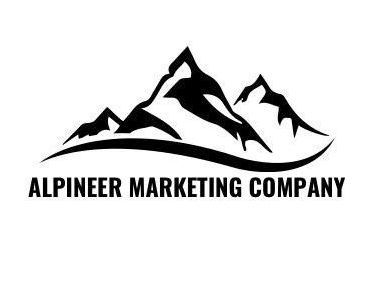Marketing for Non-Profits: Human Services
Strategies to Reach More Lives and Amplify Your Impact
Human services non-profits form the bedrock of compassionate communities. From providing shelter and food to offering counseling and support, your work directly touches lives and addresses immediate, critical needs. But in a crowded landscape, effectively reaching those who need help, attracting dedicated volunteers, and securing vital funding presents significant marketing challenges.
In today's digital age, a strong, strategic online presence isn't a luxury – it's a necessity for amplifying your impact and fulfilling your mission. This guide explores the unique marketing needs of human services non-profits and outlines strategies to connect with your key audiences and drive meaningful action.
Understanding the Unique Marketing Landscape for Human Services
Human services organizations serve a diverse set of stakeholders, each requiring a tailored marketing approach
- Beneficiaries: Individuals and families in need of specific services (shelter, food, counseling, job support). They may be facing crises and searching for immediate help, often locally. Trust, accessibility, and clear information are paramount.
- Donors: Individuals, foundations, and corporations who provide financial support. Marketing needs to convey impact, build emotional connection, demonstrate transparency, and facilitate easy giving.
- Volunteers: Individuals offering their time and skills. Marketing must inspire action, clearly outline opportunities, and show the value of their contribution.
- Community Partners: Other non-profits, local government agencies, and businesses for referrals and collaborative programs. Marketing can build awareness of services and highlight partnership opportunities.
- Advocates: Individuals or groups who champion your cause and help raise awareness. Marketing can provide them with shareable content and calls to action.
Common Marketing Goals for Human Services Non-Profits Include:
- Increasing awareness of available services among target populations.
- Driving sign-ups or access to specific programs.
- Recruiting and retaining volunteers.
- Acquiring one-time and recurring donors.
- Building trust and credibility within the community.
- Highlighting the impact of donations and volunteer hours.
Challenges often include limited budgets, staff capacity, sensitivity around beneficiary privacy, and the need to balance appeals for help with showcasing positive impact.
Key Marketing Strategies to Impact More Lives
Effective marketing for human services requires a compassionate, clear, and multi-channel approach.
1. Local SEO (Search Engine Optimization):
For many human services, reaching people in a specific geographic area is critical. When someone is in crisis or needs immediate local support (like a food bank or shelter), they turn to search engines. Optimizing for local search is non-negotiable.
What it involves: Claiming and optimizing your Google Business Profile (GBP) with accurate contact information, services offered, hours, and location. Building local citations (listings in online directories). Earning positive online reviews. Optimizing website content with local keywords (e.g., "homeless shelter Portland OR," "food pantry [Your Town Name]").
Why it's crucial: Ensures people searching for help in your area can find you easily and quickly. Builds trust through visible, accurate information.
2. Empathetic Website Development and Management:
Your website is often the first point of contact for both those needing help and potential supporters. It must be accessible, mobile-friendly, and convey trustworthiness and clarity.
What it involves: Designing a user-friendly interface (UI) and intuitive user experience (UX). Clearly outlining services, eligibility requirements, and how to access help. Dedicated sections for donations and volunteer sign-ups. Secure forms for sensitive information. Fast loading times and mobile optimization.
Why it's crucial: Reduces barriers for people seeking help or wanting to contribute. A professional site builds credibility with donors and partners.
3. Compassionate Content Creation and Copywriting:
The stories of those you serve are powerful, but must be shared ethically and with sensitivity. Content should educate, inspire, and clearly articulate impact.
What it involves: Writing clear, accessible descriptions of your services. Developing blog posts or resources addressing relevant social issues. Crafting compelling stories (with permission and anonymity when needed) that showcase impact. Creating clear calls to action for donations, volunteering, or seeking help. Developing email and social media copy that resonates.
Why it's crucial: Educates the community about the issues you address. Builds emotional connection with potential donors and volunteers. Provides essential information to beneficiaries.
4. Targeted Social Media Management:
Social media is where many potential donors, volunteers, and advocates spend their time. It's a platform for building community, sharing updates, and running targeted campaigns.
What it involves: Choosing the right platforms for your audience (Facebook is often key for community engagement and older demographics, Instagram for visuals, LinkedIn for corporate partners/volunteers). Creating engaging posts (photos, videos, stories) that share your mission and impact. Running targeted ads for specific campaigns (fundraising, volunteer drives) reaching relevant demographics and interests. Engaging with your community and responding to messages.
Why it's crucial: Builds brand awareness and fosters community. Allows for direct communication and relationship building. Effective for targeted outreach to specific groups.
5. Email and SMS Marketing:
Direct communication is essential for nurturing relationships with donors and volunteers, and providing updates to beneficiaries (with their consent).
What it involves: Building segmented email lists (donors, volunteers, subscribers). Sending regular newsletters with updates and stories. Targeted campaigns for fundraising appeals or volunteer opportunities. Automated sequences (e.g., welcome series for new subscribers, thank you for donating). Using SMS for urgent updates or reminders (with opt-in).
Why it's crucial: Highly effective for donor retention and cultivation. Keeps volunteers engaged. Provides direct, reliable communication channels.
6. Data-Driven Strategy and Advanced Reporting:
Measuring the impact of your marketing efforts is essential for optimizing spend and demonstrating results to stakeholders.
What it involves: Setting clear, measurable marketing goals aligned with your mission (e.g., X number of new donors, Y number of volunteer sign-ups). Tracking website traffic, conversion rates, and campaign performance using tools like Google Analytics. Analyzing data to understand what resonates with different audiences. Using insights to refine strategies and allocate resources effectively.
Why it's crucial: Ensures your marketing budget (whether granted or donated) is used efficiently. Allows you to demonstrate ROI to donors and funders. Provides insights for continuous improvement.
Unlocking Potential with the Google Ad Grant Program
This is where the Google Ad Grant becomes a game-changer for eligible human services non-profits.
With up to $120,000 per year in free Google Search advertising, you have an unprecedented opportunity to reach people actively searching for help or ways to contribute.
How Human Service Non-Profits can use the Google Ads Grant
- Target keywords like "[Your City] homeless shelter," "food bank near me," "volunteer opportunities [Your Town]."
- Promote specific programs to those searching for relevant services (e.g., "free counseling services," "job training for adults").
- Drive traffic to your donation pages when people search for ways to give to human services causes.
- Raise awareness for specific campaigns or urgent needs.
- Reach a local audience effectively through geo-targeting.
The challenge for many is effectively managing this significant budget within Google's Ad Grant policies. Optimizing campaigns for a minimum 5% CTR, maintaining active management, and structuring accounts correctly requires specific expertise. Without this, much of the $10,000 monthly grant can go unused.
Amplifying Your Human Services Non-Profit
At Alpineer Marketing Company, we are deeply committed to supporting human services non-profits. We understand the vital work you do and the unique challenges you face in reaching your audiences. Our experienced professionals are experts in navigating the complex digital terrain, and we have specific experience helping non-profits maximize their online impact.
We can help your eligible human services organization by:
- Guiding you through understanding and applying for the Google Ad Grant.
- Developing and managing high-impact Google Ad Grant campaigns specifically tailored to your goals – whether it's attracting beneficiaries, recruiting volunteers, or securing donations.
- Applying our data-driven strategy to ensure your marketing efforts are efficient and deliver consistent, scalable results.
- Providing expert management across other crucial channels like SEO, social media, and email marketing.
- Offering dedicated support with a low client-to-expert ratio, meaning you get personalized attention from seasoned professionals.
We believe your focus should be on providing essential services and helping those in need. Let us handle the complexities of digital marketing and the Google Ad Grant to help you reach more lives and amplify your mission's impact.
Ready to Explore How Strategic Marketing and the Google Ad Grant can Help Your Human Services Non-Profit?
Contact Alpineer Marketing Company today for a free consultation and let's discuss how we can help you make your digital ascent.
Effective digital marketing is a powerful tool for human services non-profits to expand their reach, connect with their community, and ultimately serve more people. The Google Ad Grant presents a significant opportunity to boost your online visibility with substantial free advertising.
By implementing strategic, data-driven marketing efforts across the right channels, including leveraging the Google Ad Grant, your organization can overcome challenges and achieve even greater impact.

